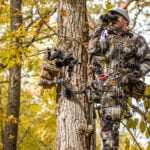Hunting mature bucks is always extremely challenging, because they have an uncanny ability to change their patterns at the exact moment, we as hunters think we have them all figured out. I have lost count of the times that I have had a mature buck on a regular and predictable pattern only to have him be a no show when I went in to hunt him! Wouldn’t it be nice if we could predict when and where a buck would be, before it actually occurred?
What would you say if I told you that it can be done, and with a surprisingly high level of accuracy? All it takes is developing some history with a certain buck and taking a proactive approach as opposed to a reactive one. Mature bucks are oftentimes creatures of habit, and this behavior goes way beyond the day-to-day activities that we often try and pattern bucks on, it can actually be from year to year throughout the majority of a buck’s life!
Mature bucks have annual patterns that can be surprisingly consistent, often times putting themselves in the same exact spot within mere hours of when they were there 365 days prior. So, how do we take advantage of these annual patterns? I think to start with, it’s extremely important to know what actually drives these patterns and then how to identify and predict them. After that, it’s a matter of making sure the conditions are right and then being there before that buck is!
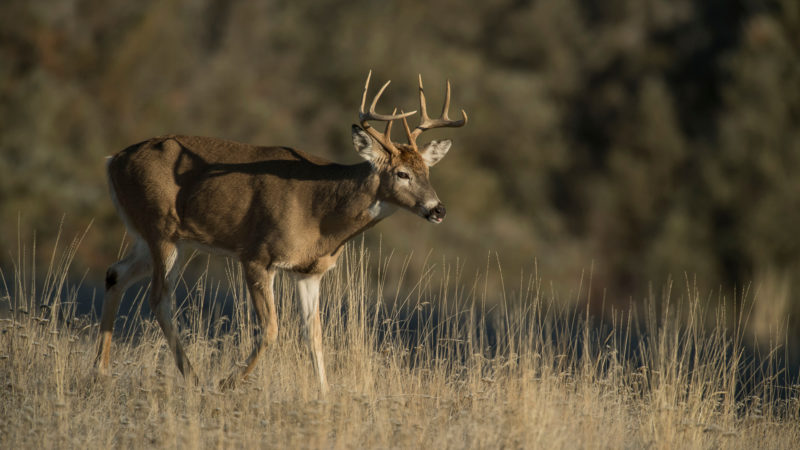
What Drives Annual Patterns?
Just like everything that drives a whitetail bucks’ behavior throughout the year, his annual patterns are influenced by 3 main factors: Food, Breeding/Rut and Safety/Security. These 3 factors can explain just about every aspect of a buck’s activity throughout the year. Regardless of if it’s where a buck sets up his summer range, when and why he shifts to his fall range, or where he makes the majority of his scrapes, it all revolves around those 3 factors.
Food – As we all probably already know; deer are driven by their stomachs and much of their activity revolves around food. Mature bucks are no different when it comes to food, and for as long as they are alive, they can be very consistent when it comes to hitting the same food sources, in the same locations, and during the same general time of the year, year after year. I have personally documented many different bucks consistently hitting the same food plots from one year to the next and doing so within 24 hours of the same time from year to year.

Unfortunately, a food driven annual pattern can be a little less consistent because food sources can vary from year to year as well as their locations. Whether it be agriculture crop rotations or inconsistent acorn production, changing food sources aren’t always the best method for taking advantage of a buck’s annual pattern.
One exception to this is during the winter, especially during times of inclement weather, when food is scarce! Bucks will often key in on those consistent late season food sources from year to year just like clockwork, making them a great way to identify an annual pattern and to be able to take advantage of it.
Breeding/Rut – Breeding is arguably the main driving factor for a buck’s behavior throughout the year. If he is not actively breeding, he is preparing for it or recovering from it. Even though rutting behavior often brings seemingly random activity that is hard to pattern, it is a great time to identify and take advantage of a buck’s annual pattern.
One of my favorite ways to identify and capitalize on annual patterns is by monitoring scrapes. Bucks will often shift to their fall ranges at nearly the same time each year and start establishing scrapes very soon after. I have countless trail camera pictures of individual bucks hitting the same scrape for multiple years in a row within 24 hours of one another. These annual patterns are easiest to identify during the late pre-rut when scraping activity is at its peak, just prior to breeding.

Safety/Security – Like the old saying goes, “mature bucks don’t get mature by being dumb or exposing themselves to danger on a regular basis”! It’s not at all uncommon for a mature buck to seek out a location that allows him to feel safe and secure, especially when hunting pressure starts heating up.
This behavior can be very repeatable from one year to the next, especially if the quality of the cover and surrounding hunting pressure remain consistent. A buck’s need to feel safe from danger can drive him to develop consistent patterns from year to year and can be a great way for a hunter to identify and take advantage of those patterns.
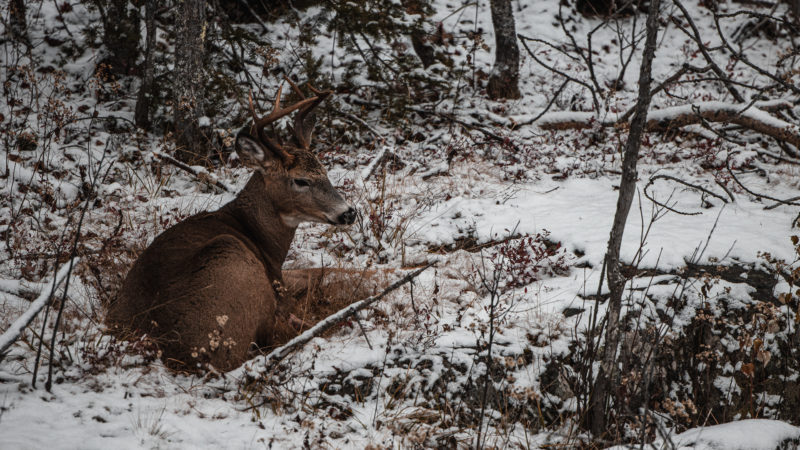
Identifying Annual Patterns
When it comes to identifying annual patterns of certain bucks, the easiest and most efficient way to do so is by utilizing trail cameras. When I say trail cameras, I am not talking about using one or two cameras for a month or two every year, I am talking about running enough cameras to ensure you have ample coverage of the property you hunt and running them year-round. I run my cameras at a variety of locations throughout the year, but like mentioned above, food, scrapes and safety/security cover are prime locations to monitor.
Once you have your cameras deployed, it’s important to find a way to organize and keep track of all of the pictures and videos you get. I also find it helpful to label or tag pictures with a buck’s name. This allows me to better organize and sort through years of pictures to help identify and decipher those annual patterns. Once you start to identify a pattern, it is important to keep a couple of things in mind before you attempt to capitalize on it.
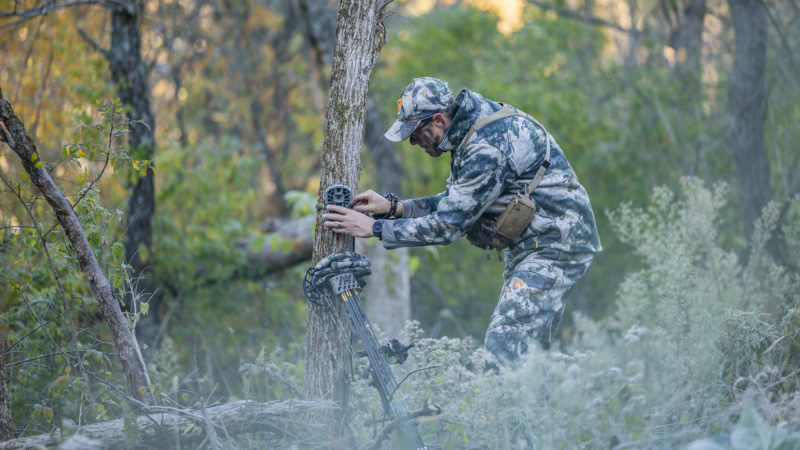
Conditions
Conditions need to be extremely similar when going in to hunt a buck based on his annual pattern. More often than not a buck uses an area by taking advantage of his sense of smell, so attempting to capitalize on a buck’s annual pattern at a location when conditions such as wind direction are different, isn’t likely to turn out well.
That’s not to say that a particular buck isn’t going to be in the area, or on that same property as he was the year before, he might just be using the opposite side of a bedding area or working a scrape line somewhere else so that the wind is in his favor. This still is part of his annual pattern; it just changes slightly based on the conditions.
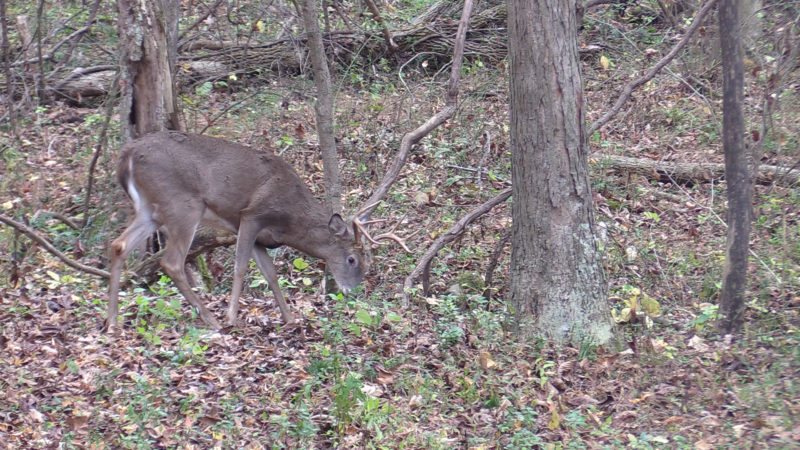
Realistic Expectations
As with any hunting technique, utilizing annual patterns is nothing more than an additional tool to put in your toolbox, so have realistic expectations when trying this technique. If a buck’s only pattern is at night, chances are pretty low that he will just show up in daylight, but it can happen. Free range wild animals never have to do what we want, especially when it comes to being where we want them to be when we want them to be there.
Conclusion
Hunting mature bucks can be extremely challenging, and there are a multitude of different techniques that can be used in order to become successful. If you haven’t done so, I highly recommend trying to identify and take advantage of a buck’s annual pattern, it might just make the difference between you wrapping a tag around your target buck or not.
Regardless of which technique you use, it’s pretty tough to reach the level of satisfaction of being able to match wits and ultimately outsmart one of these amazing animals!

 By
By 
